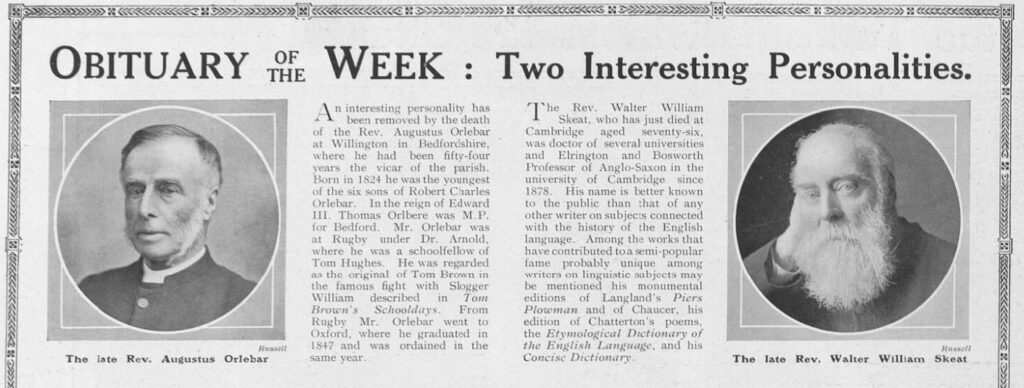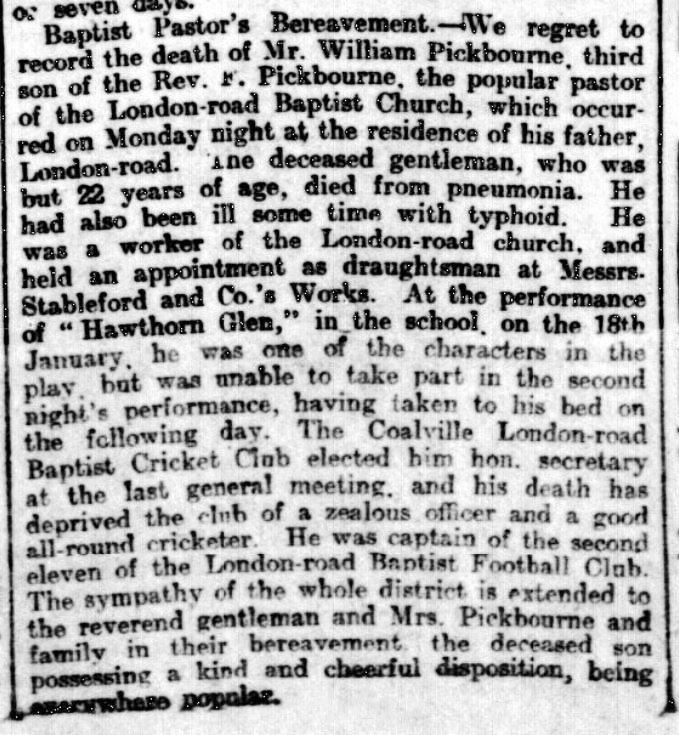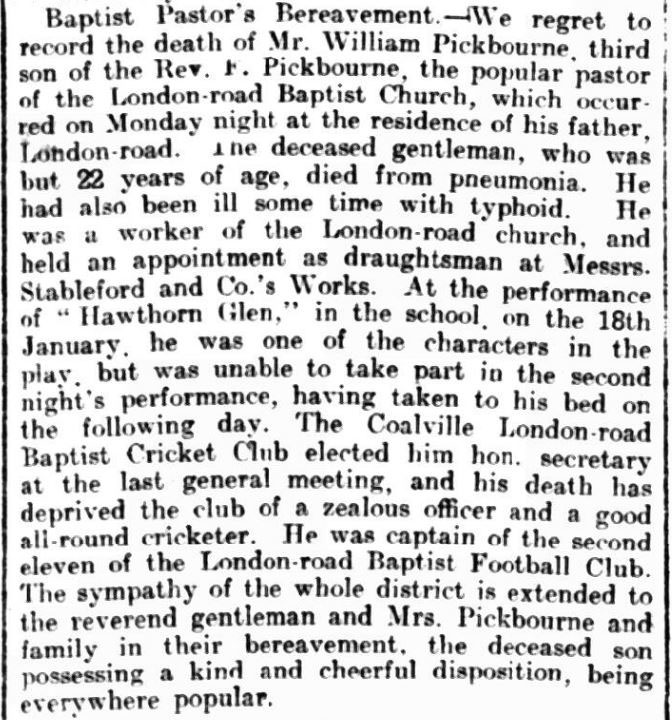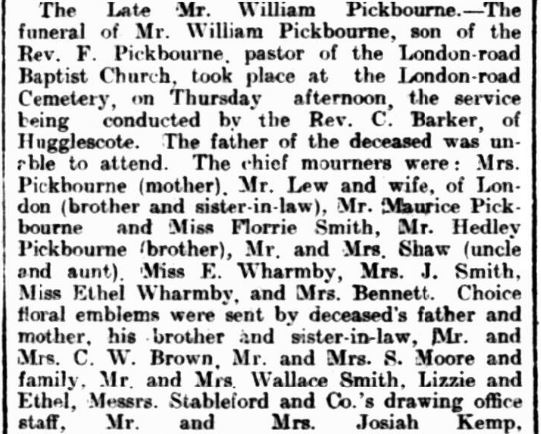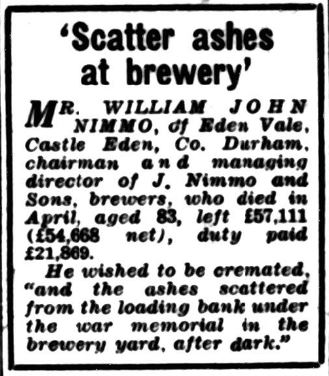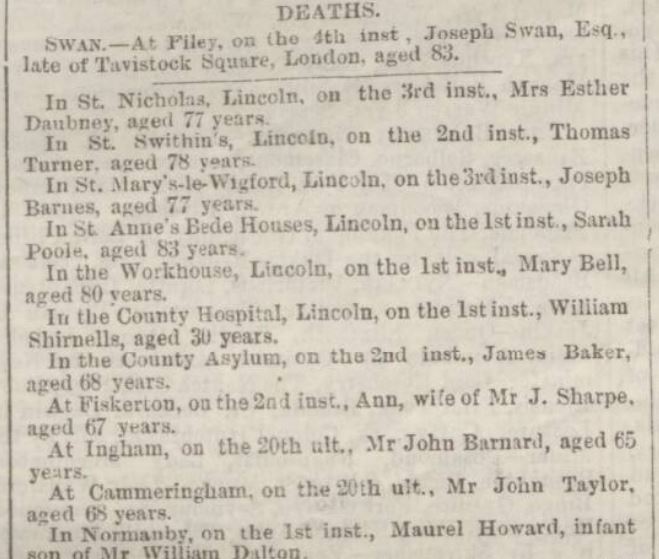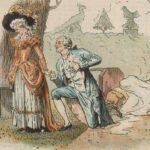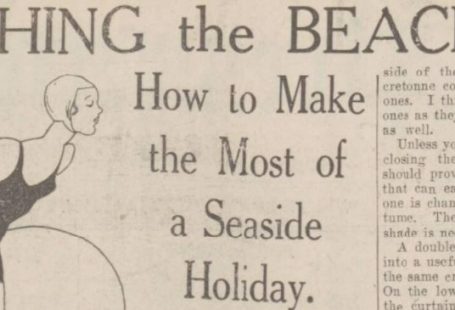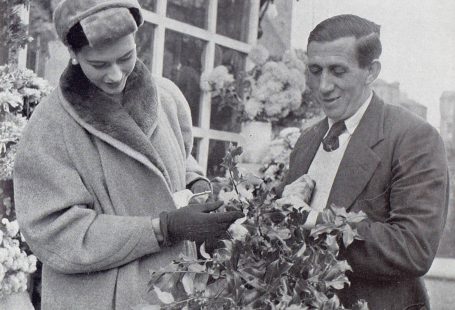Our newspaper Archive contains many thousands of obituaries and death notices, which can help you unlock fascinating information and stories about your family history. In this special blog, we present your guide to obituaries on The Archive: how to search them, where to find them, and how to make the most of them for your family history research. But first, what is an obituary?
Register now and explore the Archive
What Is An Obituary?
An obituary, according to the Cambridge Dictionary, is ‘a report, especially in a newspaper, that gives the news of someone’s death and details about their life.’
Indeed, a quick search on The Archive for the word ‘obituary’ leads to such articles as this one, from the Illustrated London News, 9 August 1873.
This is an obituary for the ‘Most Noble Cecilia Letitia, Duchess of Inverness.’ From her obituary, it is possible to glean the following information:
- The date of her death – the ‘1st inst.,’ – i.e. 1 August 1873
- The place of her death – Kensington Palace
- The cause of her death – ‘a long illness’
- Her year of birth – ‘about the year 1789’ – making her approximately 84
- The names of her parents – Arthur Saunders Gore, Earl of Arran and Elizabeth Underwood
- The date of her marriage – 14 May 1815
- The name of her husband – Sir George Buggin, who died on 12 April 1825
- The name she was then known by – ‘she assumed, by Royal license, her mother’s maiden name, and was thenceforward known as Lady Cecilia Underwood’
- Details of a proposed second marriage – to H.R.H the Duke of Sussex, which was not recgonised, and she was named the Duchess of Inverness as a consequence
- Details of any children – ‘Her Grace died without issue, and the dukedom of Inverness becomes extinct.’

With this obituary, we learn the key facts of Cecilia Letitia’s life, from her birth, to her marriage, and her death. But Cecilia Letitia was an ’eminent person,’ a member of the aristocracy no less, and so do our newspapers contain the obituaries of more ordinary people? The short answer is yes, yes they do.
Beyond The Obituary
A top tip for uncovering obituaries in our newspaper collection is to think beyond the word ‘obituary.’ The same formula for an obituary, which covers the life and death of a person, can be found under the headings of death notices, or indeed funeral notices. And so, often the simplest way of discovering the details surrounding the death of an ancestor is by searching for their name.
For example, a search for ‘William Pickbourne’ reveals the details of his death in 1911. William Pickbourne was not an ’eminent person’ like the Duchess of Inverness, but the son of a Baptist minister from Coalville, Leicestershire. And the report of his death does not fall under a newspaper section entitled ‘obituaries,’ or even ‘death notices.’
Indeed, William’s death is detailed in the Melton Mowbray Mercury and Oakham and Uppingham News on 16 February 1911 in a column which reported on the news from Coalville, and is introduced with the heading ‘Baptist Pastor’s Bereavement.’ The report on the death of this Baptist minister’s son is just as detailed, if not more detailed, as that on the death of the Duchess of Inverness.
We learn the below information from the article in the Melton Mowbray Mercury regarding William Pickbourne:
- The date of his death – Monday night – the newspaper was published on Thursday 16 February 1911, and we can work out that William must have died on 13 February 1911
- The place of his death – ‘at the residence of his father, London-road,’ in Coalville
- The cause of his death – ‘died from pneumonia,’ and he had been ‘ill some time with typhoid’
- The year of his birth – he ‘was but 22 years of age’, making the year of his birth approximately 1889
- The names of his parents – the Rev. and Mrs F. Pickbourne
- His profession – ‘a worker of the London-road church, and…draughtsman at Messrs. Stableford and Co’s Works’
- His hobbies – cricket, football and theatre
What is so special about this article is that we learn not only about the circumstances regarding William’s death, but also information regarding his character. In his death, William is brought to life.
We learn that he took part in a performance of Hawthorn Glen on 18 January 1911, but was ‘unable to take part in the second night’s performance, having taken to his bed on the following day.’ He had been elected as Honourable Secretary of the Coalville London Road Baptist Cricket Club, and the newspaper notes how ‘his death has deprived the club of a zealous officer and a good all-round cricketer.’ William was also captain of the London Road Baptist Football Club second eleven.
Staying Local
You will note that the information about William Pickbourne’s death is featured in a local Leicestershire paper, the Melton Mowbray Mercury and Oakham and Uppingham News, which was published in the town of Melton Mowbray, about 25 miles away from Coalville.
This is a useful tip for searching for information about an ancestor’s death: if recorded, it is likely that it would be recorded in a local newspaper, either from the nearest town, or one that covered the news from the county. This is especially useful if your ancestor has a more common name. You can limit your results to those from a particular county, such as Leicestershire, by filtering your results on the left hand side of the page.
You might even find duplicated information, as in the case of William Pickbourne. Newspapers were syndicated, and articles were often repeated, in some cases word for word, across different titles. News of William’s death also appeared in the Leicester Daily Post on 15 February 1911, under the same headline of ‘Baptist Pastor’s Bereavement.’ It duplicates the information found in the Melton Mowbray Mercury word for word, ending with the same touching line of how William possessed ‘a kind and cheerful disposition, being everywhere popular.’
And following the announcement of William’s death, we also find a description of his funeral, which was printed in the Leicester Daily Post on 17 February 1911. Again, our newspapers go beyond obituaries in the information they carry regarding the death of an ancestor. This time, the article is headed ‘The Late Mr. William Pickbourne.’ This sort of language can also be helpful in helping you uncovering information regarding your ancestor – think beyond the word ‘obituary’ and try adding the words ‘late’ or ‘deceased’ to the name of the person for whom you are searching.
Descriptions of funerals can be useful in uncovering more genealogical information about your ancestor. For example, William’s funeral was held on ‘Thursday afternoon,’ that being 16 February 1911, only three days after his death. It was held at the London Road Cemetery, and the service was conducted by the Reverend C. Barker, of Hugglescote. William’s father was himself a Baptist minister, but it was noted that he ‘was unable to attend.’ These few profound words hint at the grief that Frederick Pickbourne must have felt at his son’s premature passing, as well as giving us a sense of his character.
The article goes on to list who was present at the funeral, with the ‘chief mourners’ being William’s mother, Mr. Lew and wife, of London (brother and sister-in-law), Mr. Maurice Pickbourne and Miss Florrie Smith, Mr. Hedley Pickbourne (brother), Mr. and Mrs. Shaw (uncle and aunt), Miss. E Wharmby, Mrs J. Smith, Miss Ethel Wharmby, and Mrs Bennet.’ These details create William’s family group, and can help to confirm the identity of the deceased person within an article. For example, it might be a known fact that Maurice and Hedley were William’s brothers, and their mention confirms for us here that this article does in fact refer to the right William.
In tribute to William’s popularity, the ‘general office staff of Stableford’s,’ where he worked, were present at the funeral, alongside his ‘fellow-members of the the London-road Baptist Cricket and Football Clubs, and the officers and members of the London-road Baptist Church.’ Also present were ‘representatives of the Baptist Church deacons, the Free Church Council, the Wesleyan Body, the Ebenezer Church, the Primitive Methodist Church, and the Football and Cricket Clubs of the church,’ demonstrating the impact of William’s death upon his community.
Near and Far
Just as news of the death of a person might be reported in the local press, it is important to remember that news spreads, and it might be reported in newspapers beyond a person’s immediate area. It is good, therefore, to keep an open mind geographically when searching The Archive.
For example, when brewery owner William John Nimmo of Castle Eden, County Durham, passed away in April 1952, the news of his death was reported by local newspaper the Sunderland Daily Echo and Shipping Gazette, 19 April 1952. Under the headline ‘Death of Mr W.J. Nimmo,’ we learn that he passed away on the previous day, 18 April 1952, at the age of 82.
The few short paragraphs detail William’s life, how he had been to the office of his brewery, J. Nimmo & Sons, in the weeks leading to his death, how he was chairman of the Durham County Cricket Club, president of the Castle Eden Cricket Club, a founder member of the Castle Eden Golf Club, a member of the Castle Eden Parish Council for fifty years, a magistrate on the Castle Eden bench, and member of the Durham County Council.
But some months later, William John Nimmo’s name appeared in the Leicester Evening Mail, a publication which appeared some miles away from his native North East of England. With the dramatic headline ‘Scatter ashes at brewery,’ it detailed not only the estate left by William, but his wish to be ‘cremated, and the ashes scattered from the loading bank under the war memorial in the brewery yard, after dark.’
This is a reminder to us to not only keep our search geographically wide, as we might not have found this gem if we had kept to William’s home county, and also, to keep the dates fairly broad. If for instance, you know that William died in April 1952, try not to limit your search to that month, as further information could be found in the newspapers after an ancestor’s death, such as details pertaining to their will and any bequests.
Name Variations
Aside from the Duchess of Inverness, we have only taken a look at the obituaries of men thus far. Sometimes, news about women can be harder to find in our newspapers due to the variations in how their name might be written. For example, William Pickbourne’s mother is variously referred to within the press as Mrs Frederick Pickbourne, Mrs F. Pickbourne, and Mrs Harriet Pickbourne. It is important to search with such variations if a result is not immediately obvious.
In Harriet’s case, her death was reported in the Leicester Evening Mail under the name of Mrs Harriet Pickbourne on 14 October 1939. Her death had occurred ‘suddenly,’ after she had gone to visit ‘an old friend a short distance away.’ She was eighty-five at the time of her death, and she is noted as being the widow of the Rev. F. Pickbourne.
Indeed, men also could be referred to by various names, as we see with Frederick Pickbourne. More often than not, he is referred to with his title of ‘Reverend,’ which is abbreviated, and his initial. This is also something to bear in mind whilst searching for an obituary, or notice of death.
Paying For The Privilege
Usually, obituaries or longer articles about the death of someone are chosen to be written about by a newspaper, as they might address an ’eminent person’ like the Duchess of Inverness, or a local person of note. Or, they might detail an accident suffered by a person, or some other unusual way that a person had died, which might have been seen as more newsworthy.
But newspapers, both on a national and local level, included notices of births, marriages and deaths. These became more prevalent from 1820 onwards, and soon these announcements were monetised, with people paying to place a notice of death within their preferred publication.
These notices were shorter than an obituary, but are still extremely useful for family historians. For example, the Lincolnshire Chronicle on 9 October 1874 contains many names of the deceased, from which you can garner the date of somebody’s death, their age, and where they died, as well as possibly some details regarding close relationships.
Here are some examples:
In the Workhouse, Lincoln, on the 1st inst., Mary Bell, aged 80 years.
In the County Hospital, Lincoln, on the 1st inst., William Shirnells, aged 30 years.
In the County Asylum, on the 2nd inst., James Baker, aged 68 years.
At Fiskerton, on the 2nd inst., Ann, wife of Mr J. Sharpe, aged 67 years.
The information may be shorter, briefer, but it is still extremely useful. Having the place of death, as well of the date, represents key genealogical data, and may lead to further inquiry. How, for example, had 68-year-old James Baker ended up in the County Asylum, and what had caused William Shirnells’s death at the age of just 30?
But a common thread linking the above names together is that someone had paid for their insertion into the Lincolnshire Chronicle. However destitute workhouse-bound Mary Bell had been, the cost for putting her notice of death into the newspaper was 2 shillings and 6 pence. At over £7 in today’s money, that was not an amount to be sniffed at.
And because of the payment that was due to newspapers for these death notices, not everybody’s death found its way into the press. But, as we will summarise below, using our top tips will arm you with the best chance of finding your ancestor’s obituary, death notice, or funeral information, across our Archive.
Our Top Ten Tips for Obituary Hunting On The Archive
So without any further ado, here are our top ten tips for obituary hunting on The Archive.
- Obituaries for all – newspaper obituaries deal with famous people, but also more ordinary people too
- Search for names rather than the word ‘obituary’ – news about a person’s death could be reported in many different forms
- Scour for information – glean all the information you can from the reports you find, whether that is location or genealogical data
- Keep things local – you can narrow your results to a place or county, especially useful if you are searching for a more common name
- Use the language of the day – searching for a name alongside words like ‘late’ or ‘deceased’ can help you narrow down your results
- Be geographically broad – not to discount number 4, but keeping your results initially geographically broad might give you some unexpected hits
- Look at reports on funerals – reports on funerals can be just as useful as obituaries
- Keep dates open – make sure to be broad with you dates, as details (such as probate or wills and bequests) might emerge after a person has died
- Consider name variations – use different name variations (such as Mrs John Smith, Mrs J. Smith or Mrs Evelyn Smith) to draw out results
- Consult death notices – these may have less information that obituaries and other reports, but the detail they provide is just as valuable
So that’s it from us – have a go at searching The Archive and let us know what you discover.


